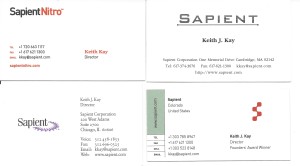This Atlantic article on how Putin has fallen into the Dictator trap got me thinking about how to avoid this as a business or team leader. How could a manager, team or project leader have to worry about being a dictator?
In the course of a 25 year career, I have observed many team and corporate leaders who don’t realize that everyone on their team is agreeing with them.
That’s a key element of the dictator trap.
“despots rarely get told that their stupid ideas are stupid, or that their ill-conceived wars are likely to be catastrophic. Offering honest criticism is a deadly game and most advisers avoid doing so. Those who dare to gamble eventually lose and are purged. So over time, the advisers who remain are usually yes-men who act like bobbleheads, nodding along when the despot outlines some crackpot scheme.”
Yes, we aren’t launching wars or having people imprisoned or worse, but people like to be liked, and people like to be told their ideas are good. However, if you aren’t specifically on guard for this, and more importantly building a team culture that not only allows, but encourages, hell even requires even that people speak up and challenge ideas then you will end up with a team who will just go and execute your poorly conceived project plan.
The next team meeting you have, really listen to how your team reacts to your ideas. There will be some who immediately agree, and some who say nothing until they see where the team lands, and then they’ll agree what a great idea it is. Some may say nothing. But does anyone disagree or at least offer risks or ideas to improve your suggestion?
So what can you do as a leader to guard against this?
- Speak last – Pose a question or bring an issue to your team’s attention, but rather than proceeding to share what you think should be done about it, ask the team for ideas. And. Just. Wait.
- Call on people – If no one speaks up, then ask someone.
- Call on other people – Be sure that you are hearing from the whole team, especially those who don’t normally share. Ask for their input and actually listen. Ask follow up questions to show you did.
- Create a safe space for negative thinking
- I’ve written before about the value of a Pre-Mortem which is one tool for creating space for teams to think about failure without being negative or being worried about being perceived as a Chicken Little.
- Something else that I learned during my time in Special Operations is coming up with multiple COAs, or courses of action, then gaming each one out. Challenge the team to come up with more than one approach to solve an issue or take advantage of an opportunity. Far too often in today’s fast paced world, I have seen teams converge on a solution before really identifying other options. Coming up with 2-3 COAs then asking the team what can go wrong with each allows them to offer critiques without the risk of them being perceived as being ‘negative’. (Alternatively, develop a full SWOT if warranted.)
- Do not tolerate agreement – sycophants are dangerous, and not just to the project or issue at hand, if you are constantly told you are amazing, your inflated ego may get you into some serious trouble at some point. Ask your team, for example “I’m glad we like this option, but why? What are its strengths and weaknesses?”
- Be patient with negativity – a negative team member may be one of the hardest team members to deal with, but don’t allow yourself to get upset or impatient, they may just be a significant asset. If you shut down team members who speak up, they won’t do it next time, and the rest of the team will get that message. Ask, “I can see you’re upset/don’t agree with this, tell me why, what am I missing? How might we address you’re concern?”
- Look for opportunities to change your mind – if you really want your team to trust you by being vulnerable and disagreeing, they have to see that you are able to change your mind, or go with an idea other than your own. If you are uncomfortable with this, you might have control issues you need to deal with, but then start with something lower risk and work up from there.
- Be careful with a ‘can-do’ culture – I have more to say about this in another post, but while a can-do culture can be positive, if you’re not careful it can become toxic in its own right, leading to a lack of critical thinking. Don’t let people just agree. Dig in, ask why, how, what else, what could we be missing?
Is this hard? It can be. But that’s your job, if you want to be a leader your comfort can’t be your first concern. If you have trouble with this idea, you aren’t a leader.
Is it going to take more time? Sure, upfront. But your team will end up with a better solution/product/plan and you will spend far less time refactoring and dealing with issues. Remember the old cynical software project management maxim:
There is never enough time to do it right, but there is always enough time to do it over.
Every grumpy software project manager



